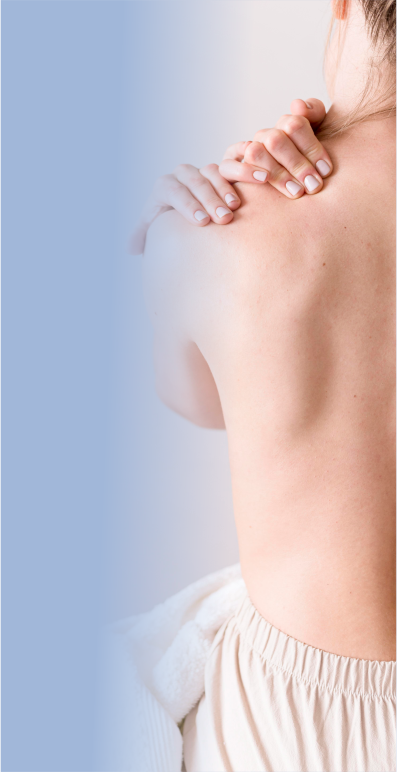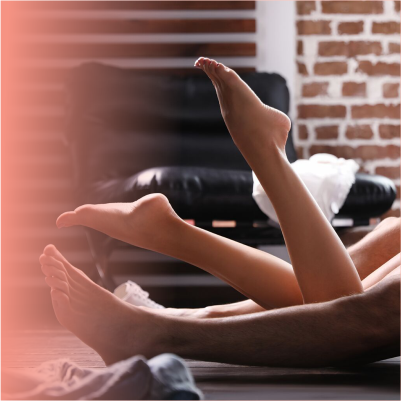There are numerous causes for inner knee pain, frequently stemming from cartilage wear and tear, sports-related injuries, or knee trauma.
Knee discomfort is prevalent and may signify various knee ailments or traumas. The inner knee, known as the medial knee or medial compartment, is situated closest to the opposite knee.
Comprising four bones, four ligaments, numerous tendons, two menisci, and cartilage, the knee is susceptible to injury due to its intricate structure, making it one of the body’s most complex joints.
Jump to Section
Common causes | Osteoarthritis | Rheumatoid arthritis | MCL injury | Medial meniscus injury | Pes anserine bursitis | Medial plica irritation | Other injury | Treatment | Prevention | FAQ | Takeaway
Common causes of inner knee pain
Knee pain often occurs due to an injury. Some common incidents that cause knee injury and pain include:
- falls
- sports injuries
- increased activity
Here are seven common causes of inner knee pain.
1. Osteoarthritis (OA)
Osteoarthritis (OA), often referred to as the “wear and tear” arthritis, is a common joint condition characterized by the gradual degeneration of cartilage. While it can affect any joint in the body, it frequently occurs in weight-bearing joints like the knees. When OA affects the inner knee, individuals may experience significant discomfort and limitations in mobility. Here’s a closer look at osteoarthritis as a common cause of inner knee pain:
Understanding Osteoarthritis (OA):
OA develops over time as the protective cartilage cushioning the ends of bones wears down, leading to pain, stiffness, and reduced joint function. Factors contributing to OA of the knee include age, genetics, obesity, previous joint injuries, and repetitive stress on the joint.
Symptoms:
Common symptoms of knee OA include:
- Pain, particularly on the inner side of the knee, which may worsen with activity and improve with rest.
- Stiffness and reduced range of motion, especially after periods of inactivity or prolonged sitting.
- Swelling and tenderness around the joint, indicating inflammation.
- Crepitus or a grating sensation when moving the knee.
Diagnosis:
Diagnosing OA typically involves a combination of medical history, physical examination, and imaging studies such as X-rays or MRI scans. X-rays can reveal joint space narrowing, bone spurs, and other characteristic changes associated with OA.
Treatment:
While there is no cure for OA, several treatment options aim to alleviate symptoms and improve joint function:
- Pain Management: Over-the-counter or prescription pain medications, such as acetaminophen or nonsteroidal anti-inflammatory drugs (NSAIDs), can help manage pain and inflammation.
- Lifestyle Modifications: Weight management through diet and exercise can reduce stress on the knee joint. Low-impact activities like swimming or cycling may be preferable to high-impact exercises.
- Physical Therapy: Exercise programs designed to strengthen the muscles around the knee joint, improve flexibility, and enhance overall function can be beneficial.
- Assistive Devices: Using braces, canes, or other assistive devices can provide support and stability, reducing strain on the knee.
- Injections: Corticosteroid injections or viscosupplementation (hyaluronic acid injections) may provide temporary relief by reducing inflammation and lubricating the joint.
- Surgery: In severe cases of knee OA that do not respond to conservative treatments, surgical options such as arthroscopy, osteotomy, or joint replacement may be considered.
Prevention:
While some risk factors for OA, such as age and genetics, are beyond control, certain lifestyle modifications can help reduce the risk or delay the onset of knee OA. These include maintaining a healthy weight, staying physically active, avoiding repetitive stress on the knees, and protecting the joints from injury.
In conclusion, osteoarthritis is a common cause of inner knee pain, affecting millions of people worldwide. By understanding the symptoms, diagnosis, and treatment options for knee OA, individuals can better manage their condition and maintain an active lifestyle despite the challenges posed by this degenerative joint disease. Consulting with a healthcare professional is essential for personalized treatment recommendations tailored to individual needs and preferences.
2. Rheumatoid arthritis (RA)
Rheumatoid arthritis (RA) is a chronic autoimmune disease that primarily affects the joints, leading to inflammation, pain, and eventually joint damage and deformity. While RA commonly affects smaller joints like those in the hands and feet, it can also impact larger joints such as the knees, including the inner knee. Here’s a detailed exploration of rheumatoid arthritis as a potential cause of inner knee pain:
Understanding Rheumatoid Arthritis (RA):
RA occurs when the body’s immune system mistakenly attacks its own tissues, primarily targeting the synovium, the lining of the joints. This results in inflammation that can damage cartilage, bones, and other joint structures. While the exact cause of RA is unknown, genetic, environmental, and hormonal factors are believed to play a role in its development.
Symptoms:
The symptoms of rheumatoid arthritis can vary in severity and may include:
- Joint pain, swelling, and stiffness, which may be worse in the morning or after periods of inactivity.
- Fatigue, fever, and general malaise.
- Joint deformities, such as misalignment or instability, as the disease progresses.
- Systemic complications affecting organs and tissues beyond the joints, including the skin, eyes, lungs, and heart.
Diagnosis:
Diagnosing RA involves a combination of medical history, physical examination, blood tests, and imaging studies. Blood tests, such as rheumatoid factor (RF) and anti-cyclic citrullinated peptide (anti-CCP) antibodies, can help confirm the diagnosis. Imaging tests like X-rays or MRI scans may reveal characteristic joint changes associated with RA, such as joint erosion and soft tissue swelling.
Treatment:
Treatment for rheumatoid arthritis aims to reduce inflammation, alleviate symptoms, prevent joint damage, and improve overall quality of life. Common treatment strategies include:
- Medications: Nonsteroidal anti-inflammatory drugs (NSAIDs), disease-modifying antirheumatic drugs (DMARDs), biologic agents, and corticosteroids are commonly prescribed to manage pain and inflammation and slow disease progression.
- Physical Therapy: Exercise programs focused on strengthening muscles, improving joint flexibility, and maintaining range of motion can help manage symptoms and enhance function.
- Occupational Therapy: Occupational therapists can provide strategies and adaptive devices to assist with activities of daily living and reduce joint stress.
- Joint Protection Techniques: Using assistive devices, ergonomic aids, and proper body mechanics can help protect the knees and minimize strain during daily activities.
- Surgery: In severe cases of RA with joint damage or deformity, surgical interventions such as joint replacement or synovectomy may be necessary to restore function and alleviate pain.
Prevention:
While rheumatoid arthritis cannot be prevented, early diagnosis and aggressive management can help minimize joint damage and preserve joint function. Adopting a healthy lifestyle, including regular exercise, maintaining a balanced diet, managing stress, and avoiding smoking, may also help reduce the risk of complications associated with RA.
In summary, rheumatoid arthritis is a chronic autoimmune disease that can cause inflammation and pain in the knees, including the inner knee. By understanding the symptoms, diagnosis, and treatment options for RA, individuals can work with healthcare professionals to effectively manage the condition and maintain a good quality of life despite its challenges. Early intervention and comprehensive care are key to optimizing outcomes for individuals living with rheumatoid arthritis.
3. Medial collateral ligament (MCL) injury
Medial collateral ligament (MCL) injury is a common occurrence, particularly among athletes involved in sports that involve sudden changes in direction or direct blows to the knee. The MCL, located on the inner side of the knee, plays a crucial role in stabilizing the joint and preventing excessive inward movement. When the MCL is injured, individuals may experience significant pain and instability, impacting their ability to engage in physical activities. Let’s delve into the details of MCL injury as a potential cause of inner knee pain:
Understanding MCL Injury:
The MCL is one of the primary ligaments responsible for maintaining the stability of the knee joint, particularly against forces that push the knee inward (valgus stress). MCL injuries commonly occur due to:
- Direct impact or trauma to the outer side of the knee, causing the MCL to stretch or tear.
- Sudden twisting or hyperextension of the knee, leading to overloading of the ligament.
- Sports-related activities, such as football, soccer, skiing, or basketball, that involve rapid changes in direction or contact with other players.
Symptoms:
The symptoms of an MCL injury may vary depending on the severity of the damage but often include:
- Pain and tenderness along the inner side of the knee, particularly with palpation or movement.
- Swelling and bruising around the affected area.
- Instability or a feeling of “giving way” in the knee, especially during weight-bearing activities.
- Limited range of motion, particularly when attempting to bend or straighten the knee.
Diagnosis:
Diagnosing an MCL injury typically involves a thorough physical examination, including assessing the range of motion, stability, and tenderness of the knee. Imaging tests such as X-rays, ultrasound, or MRI may be ordered to evaluate the extent of ligament damage and rule out associated injuries, such as meniscal tears or cruciate ligament injuries.
Treatment:
Treatment for MCL injuries depends on the severity of the injury and may include:
- Rest and Immobilization: Initially, resting the knee and using supportive devices like braces or crutches to limit weight-bearing can help promote healing and reduce stress on the injured ligament.
- Ice and Compression: Applying ice packs and compression wraps to the affected knee can help alleviate pain, reduce swelling, and minimize inflammation.
- Physical Therapy: Once pain and swelling subside, physical therapy exercises focused on strengthening the muscles around the knee, improving flexibility, and restoring joint stability can aid in rehabilitation.
- Medications: Nonsteroidal anti-inflammatory drugs (NSAIDs) or pain relievers may be prescribed to manage pain and inflammation during the acute phase of injury.
- Surgical Intervention: In severe cases of MCL injury, such as complete tears or combined ligament injuries, surgical repair or reconstruction may be necessary to restore stability and function to the knee.
Recovery and Prevention:
Recovery from an MCL injury can vary depending on the severity of the injury and individual factors. Following a comprehensive rehabilitation program prescribed by a healthcare professional is essential to optimize recovery and minimize the risk of recurrent injuries. Additionally, implementing proper warm-up routines, maintaining good conditioning, using appropriate protective gear, and practicing proper techniques during sports activities can help prevent MCL injuries.
In conclusion, medial collateral ligament (MCL) injury is a common cause of inner knee pain, particularly among athletes and individuals engaged in activities that place stress on the knee joint. By understanding the symptoms, diagnosis, and treatment options for MCL injuries, individuals can take proactive steps to address the injury promptly and effectively, facilitating a safe return to activity and minimizing the risk of long-term complications. Seeking prompt medical evaluation and adhering to recommended treatment protocols are crucial for achieving optimal outcomes and preventing future injuries to the knee joint.
4. Medial meniscus injury
Medial meniscus injury is a prevalent cause of inner knee pain, often resulting from traumatic injury or degenerative changes over time. The meniscus is a C-shaped cartilage that acts as a cushion and stabilizer within the knee joint, with the medial meniscus located on the inner side of the knee. When the medial meniscus is injured, individuals may experience pain, swelling, and limited mobility. Let’s explore the details of medial meniscus injury as a common cause of inner knee pain:
Understanding Medial Meniscus Injury:
The medial meniscus is susceptible to injury due to its position within the knee joint and its role in distributing forces during weight-bearing activities. Medial meniscus injuries commonly occur due to:
- Traumatic events, such as sudden twisting or pivoting motions, direct blows to the knee, or traumatic impact during sports activities.
- Degenerative changes associated with aging, repetitive stress, or underlying conditions like osteoarthritis.
Symptoms:
The symptoms of a medial meniscus injury may include:
- Pain along the inner side of the knee, particularly with activities that involve bending or twisting the knee.
- Swelling and stiffness, which may develop gradually or suddenly after an injury.
- Catching, locking, or clicking sensations within the knee joint, indicating mechanical issues like meniscal tears.
- Difficulty bearing weight on the affected leg or performing activities that require knee movement.
Diagnosis:
Diagnosing a medial meniscus injury typically involves a combination of medical history, physical examination, and imaging studies. Specific tests, such as McMurray’s test or Apley’s compression test, may be performed to assess for meniscal injury. Imaging modalities like MRI or ultrasound can provide detailed visualization of the meniscus and help confirm the diagnosis.
Treatment:
Treatment for medial meniscus injury depends on the type, severity, and location of the tear, as well as individual factors such as age, activity level, and overall health. Common treatment options include:
- Conservative Management: For minor tears or degenerative changes, conservative measures such as rest, ice, compression, and elevation (RICE therapy), along with physical therapy exercises to strengthen the surrounding muscles and improve joint stability, may be recommended.
- Medications: Nonsteroidal anti-inflammatory drugs (NSAIDs) or corticosteroid injections may be prescribed to reduce pain and inflammation associated with meniscal injury.
- Arthroscopic Surgery: In cases of significant meniscal tears or mechanical symptoms that do not respond to conservative treatment, arthroscopic surgery may be necessary to repair or remove the damaged portion of the meniscus.
- Meniscal Transplantation: In rare cases of extensive meniscal damage or loss, meniscal transplantation may be considered to restore normal knee function and delay the progression of degenerative joint changes.
Recovery and Rehabilitation:
Recovery from a medial meniscus injury typically involves a structured rehabilitation program aimed at restoring knee function, reducing pain and swelling, and improving range of motion and strength. Following surgery, physical therapy exercises may be prescribed to gradually reintroduce weight-bearing activities and facilitate a safe return to sports or daily activities.
Prevention:
While some risk factors for medial meniscus injury, such as traumatic events, may be unavoidable, certain preventive measures can help reduce the risk of injury, such as:
- Maintaining strong muscles and proper biomechanics through regular exercise and strength training.
- Using appropriate protective gear and equipment during sports activities, such as knee braces or supports.
- Avoiding sudden, high-impact movements or activities that place excessive stress on the knee joint.
In summary, medial meniscus injury is a common cause of inner knee pain, often resulting from traumatic injury or degenerative changes over time. By understanding the symptoms, diagnosis, and treatment options for medial meniscus injuries, individuals can take proactive steps to address the injury promptly and effectively, facilitating a safe return to activity and minimizing the risk of long-term complications. Seeking prompt medical evaluation and adhering to recommended treatment protocols are crucial for achieving optimal outcomes and preventing future injuries to the knee joint.
5. Pes anserine bursitis
Pes anserine bursitis is a condition characterized by inflammation of the pes anserine bursa, a small fluid-filled sac located between the tendons of the hamstring muscles and the shinbone (tibia) on the inner side of the knee. This condition typically causes pain and discomfort on the inner knee and can significantly impact daily activities. Let’s delve into the details of pes anserine bursitis as a common cause of inner knee pain:
Understanding Pes Anserine Bursitis:
The pes anserine bursa acts as a cushion between the tendons of the hamstring muscles (sartorius, gracilis, and semitendinosus) and the shinbone, reducing friction and allowing smooth movement of the tendons during knee flexion and extension. Pes anserine bursitis occurs when this bursa becomes inflamed, usually due to repetitive friction, overuse, or direct trauma to the inner knee.
Symptoms:
Individuals with pes anserine bursitis may experience:
- Pain and tenderness on the inner side of the knee, just below the joint line.
- Swelling and warmth over the affected area.
- Pain that worsens with activities that involve bending or straightening the knee, such as walking, climbing stairs, or getting up from a seated position.
- Limited range of motion and stiffness in the knee joint.
Diagnosis:
Diagnosing pes anserine bursitis typically involves a thorough medical history, physical examination, and may include imaging studies such as ultrasound or MRI to rule out other potential causes of knee pain, such as meniscal tears or ligament injuries. Palpation of the pes anserine bursa may elicit tenderness and reproduce the patient’s symptoms.
Treatment:
Treatment for pes anserine bursitis aims to alleviate pain, reduce inflammation, and address underlying contributing factors. Common treatment options include:
- Rest and Activity Modification: Avoiding activities that exacerbate symptoms, such as high-impact exercises or prolonged kneeling, can help reduce irritation to the bursa and promote healing.
- Ice and Compression: Applying ice packs and compression wraps to the affected knee can help alleviate pain and swelling.
- Nonsteroidal Anti-Inflammatory Drugs (NSAIDs): Over-the-counter or prescription NSAIDs may be recommended to reduce pain and inflammation associated with bursitis.
- Physical Therapy: A physical therapy program may include stretching and strengthening exercises to improve flexibility, muscle balance, and joint stability around the knee. Modalities such as ultrasound or iontophoresis may also be used to decrease inflammation.
- Corticosteroid Injections: In cases of persistent or severe symptoms, corticosteroid injections into the pes anserine bursa may be administered to provide temporary relief from pain and inflammation.
- Biomechanical Evaluation: Addressing underlying biomechanical issues, such as muscle imbalances or gait abnormalities, through orthotic devices, shoe modifications, or gait training may help prevent recurrence of bursitis.
Recovery and Prevention:
Recovery from pes anserine bursitis typically involves a gradual return to activity once symptoms improve, along with continued preventive measures to minimize the risk of recurrence. Engaging in regular stretching and strengthening exercises, maintaining proper biomechanics during activities, and using protective padding or braces when necessary can help prevent irritation to the pes anserine bursa.
In conclusion, pes anserine bursitis is a common cause of inner knee pain, often resulting from inflammation of the bursa located between the tendons of the hamstring muscles and the shinbone on the inner side of the knee. By understanding the symptoms, diagnosis, and treatment options for pes anserine bursitis, individuals can take proactive steps to address the condition and minimize its impact on daily activities. Seeking prompt medical evaluation and adhering to recommended treatment protocols are essential for achieving optimal outcomes and preventing recurrence of bursitis.
6. Medial plica irritation
Medial plica irritation, also known as medial plica syndrome, is a condition characterized by inflammation and irritation of the medial plica, a fold of synovial tissue in the knee joint. While the plica is a normal anatomical structure present in the knee during fetal development, it usually diminishes in size as the knee matures. However, in some individuals, the plica may persist and become irritated, causing pain and discomfort on the inner side of the knee. Let’s explore the details of medial plica irritation as a potential cause of inner knee pain:
Understanding Medial Plica Irritation:
The medial plica is a remnant of tissue that forms during embryonic development and typically regresses as the knee matures. However, in some cases, the plica may persist and become inflamed or irritated, leading to symptoms of pain and discomfort. Medial plica irritation can occur due to various factors, including repetitive stress, overuse, trauma, or biomechanical abnormalities that result in friction and irritation of the plica against surrounding structures within the knee joint.
Symptoms:
Common symptoms of medial plica irritation may include:
- Pain or discomfort on the inner side of the knee, particularly with activities that involve bending or straightening the knee, such as walking, climbing stairs, or squatting.
- Swelling or tenderness along the course of the medial plica.
- Clicking, popping, or snapping sensations within the knee joint, particularly during movement.
- Stiffness or limited range of motion, especially after periods of inactivity.
Diagnosis:
Diagnosing medial plica irritation often involves a thorough medical history, physical examination, and may include imaging studies such as MRI or ultrasound to visualize the plica and assess for associated pathology, such as cartilage damage or meniscal tears. A diagnostic arthroscopy may be performed in some cases to directly visualize the plica and confirm the diagnosis.
Treatment:
Treatment for medial plica irritation typically focuses on relieving symptoms and addressing underlying contributing factors. Common treatment options include:
- Rest and Activity Modification: Avoiding activities that exacerbate symptoms, such as high-impact exercises or prolonged kneeling, can help reduce irritation to the medial plica and promote healing.
- Ice and Compression: Applying ice packs and compression wraps to the affected knee can help alleviate pain and swelling.
- Nonsteroidal Anti-Inflammatory Drugs (NSAIDs): Over-the-counter or prescription NSAIDs may be recommended to reduce pain and inflammation associated with plica irritation.
- Physical Therapy: A physical therapy program may include stretching and strengthening exercises to improve flexibility, muscle balance, and joint stability around the knee. Modalities such as ultrasound or electrical stimulation may also be used to decrease inflammation and promote tissue healing.
- Corticosteroid Injections: In cases of persistent or severe symptoms, corticosteroid injections into the inflamed plica may be administered to provide temporary relief from pain and inflammation.
- Surgical Intervention: In rare cases of refractory medial plica irritation that do not respond to conservative treatment, arthroscopic surgery may be considered to excise or release the irritated plica and alleviate symptoms.
Recovery and Prevention:
Recovery from medial plica irritation typically involves a gradual return to activity once symptoms improve, along with continued preventive measures to minimize the risk of recurrence. Engaging in regular stretching and strengthening exercises, maintaining proper biomechanics during activities, and using protective padding or braces when necessary can help prevent irritation to the medial plica.
In summary, medial plica irritation is a potential cause of inner knee pain, resulting from inflammation and irritation of the medial plica within the knee joint. By understanding the symptoms, diagnosis, and treatment options for medial plica irritation, individuals can take proactive steps to address the condition and minimize its impact on daily activities. Seeking prompt medical evaluation and adhering to recommended treatment protocols are essential for achieving optimal outcomes and preventing recurrence of symptoms.
7. Other injury
When exploring the potential causes of inner knee pain, it’s essential to consider other less common but significant injuries that may contribute to discomfort in this area. While conditions such as medial meniscus tears, MCL injuries, osteoarthritis, rheumatoid arthritis, pes anserine bursitis, and medial plica irritation are frequently encountered, there are additional injuries that could also be responsible for inner knee pain. Let’s delve into some of these lesser-known injuries:
Iliotibial Band Syndrome (ITBS):
ITBS is a common overuse injury that affects the iliotibial band, a thick band of tissue that runs along the outer thigh and inserts into the outer side of the knee. However, ITBS can also cause pain and discomfort on the inner side of the knee, particularly if there are biomechanical imbalances or compensatory movements that affect the distribution of forces within the knee joint.
Popliteus Tendon Injury:
The popliteus tendon is a small tendon located at the back of the knee joint, responsible for unlocking the knee during the initial phase of knee flexion. Injury to the popliteus tendon, such as overuse or direct trauma, can result in pain and tenderness on the inner side of the knee, particularly during activities that involve bending or twisting the knee.
Pectineus Muscle Strain:
The pectineus muscle is a small muscle located in the groin area that contributes to hip flexion and thigh adduction. Strain or injury to the pectineus muscle can cause referred pain to the inner knee region, particularly if the muscle tension affects the biomechanics of the hip and knee joints.
Sartorius Muscle Strain:
The sartorius muscle is the longest muscle in the human body, running from the hip to the inner side of the knee. Strain or injury to the sartorius muscle can result in pain and discomfort along its course, potentially causing inner knee pain if the muscle tension affects its insertion point on the inner knee.
Synovial Plica Syndrome:
Similar to medial plica irritation, synovial plica syndrome involves inflammation and irritation of synovial folds within the knee joint. These synovial folds, or plicae, can sometimes become inflamed and cause pain, clicking, or catching sensations within the knee joint, including the inner knee region.
Inflammatory Conditions:
In addition to rheumatoid arthritis, other inflammatory conditions such as psoriatic arthritis, ankylosing spondylitis, or systemic lupus erythematosus (SLE) can also affect the knee joint and cause inner knee pain as a symptom of systemic inflammation.
Neurological Conditions:
Although less common, neurological conditions such as nerve compression or entrapment syndromes, such as meralgia paresthetica or obturator nerve entrapment, can cause referred pain to the inner knee region.
Infection or Tumor:
In rare cases, infections or tumors affecting the knee joint or surrounding structures can manifest as inner knee pain. Prompt medical evaluation and appropriate diagnostic tests are necessary to rule out these serious underlying causes.
In conclusion, while injuries such as medial meniscus tears, MCL injuries, osteoarthritis, and others are commonly associated with inner knee pain, it’s essential to consider other potential causes, including ITBS, popliteus tendon injury, pectineus muscle strain, and synovial plica syndrome. Seeking medical evaluation from a healthcare professional is crucial for accurate diagnosis and appropriate management of inner knee pain, especially if symptoms persist or worsen over time.
Treating inner knee pain
Treating inner knee pain effectively depends on accurately identifying the underlying cause of the pain. Once the cause is determined, appropriate treatment strategies can be implemented to alleviate symptoms and address the root problem. Here are some general approaches to treating inner knee pain:
- Rest and Activity Modification:
- Resting the knee and avoiding activities that exacerbate pain can help prevent further irritation and promote healing.
- Modify activities or sports that involve repetitive movements or high impact on the knee joint.
- Ice Therapy:
- Applying ice packs to the inner knee for 15-20 minutes several times a day can help reduce pain and inflammation.
- Compression and Elevation:
- Compression bandages or sleeves can help reduce swelling and provide support to the knee joint.
- Elevating the leg when resting can also help reduce swelling and improve circulation.
- Pain Medications:
- Over-the-counter pain relievers such as acetaminophen or nonsteroidal anti-inflammatory drugs (NSAIDs) like ibuprofen can help alleviate pain and reduce inflammation.
- Follow the recommended dosage and precautions provided by healthcare professionals.
- Physical Therapy:
- A physical therapist can design a personalized exercise program to strengthen the muscles around the knee joint, improve flexibility, and correct biomechanical imbalances.
- Modalities such as ultrasound, electrical stimulation, or manual therapy techniques may also be used to reduce pain and promote healing.
- Bracing or Orthotics:
- Knee braces or orthotic devices may provide support and stability to the knee joint, particularly for conditions like MCL injuries or pes anserine bursitis.
- Custom orthotics can help correct biomechanical issues and reduce stress on the knee joint during weight-bearing activities.
- Injections:
- Corticosteroid injections into the knee joint or affected bursa can provide temporary relief from pain and inflammation for conditions like arthritis, bursitis, or synovial plica irritation.
- Hyaluronic acid injections may be used to lubricate the knee joint and improve joint function in cases of osteoarthritis.
- Surgery:
- In severe cases or when conservative treatments fail to provide relief, surgical interventions such as arthroscopy, meniscal repair, ligament reconstruction, or joint replacement may be necessary.
- Surgical options depend on the specific underlying condition and severity of the injury.
- Lifestyle Modifications:
- Maintaining a healthy weight through diet and exercise can reduce stress on the knee joint and improve overall joint health.
- Avoiding activities that put excessive strain on the knees, such as kneeling for prolonged periods or wearing improper footwear, can help prevent further injury.
It’s important to consult with a healthcare professional for an accurate diagnosis and personalized treatment plan tailored to individual needs and underlying conditions. Following recommended treatments and rehabilitation protocols diligently can help alleviate inner knee pain and restore function, allowing individuals to return to their normal activities with reduced discomfort.
Exercises for inner knee pain
Exercises for Inner Knee Pain
While not all causes of inner knee pain are preventable, medical professionals and physical therapists recognize the importance of strengthening the leg muscles, particularly the quadriceps and hamstrings, to effectively manage and prevent knee injuries.
Helpful Exercises:
- Straight Leg Lifts: Lie on your back with one leg bent and the other straight. Lift the straight leg slowly off the ground, then lower it back down. Repeat on both legs.
- Stationary or Recumbent Biking: Utilize a stationary bike or a recumbent bike, focusing on smooth pedal strokes to strengthen the leg muscles without placing excessive strain on the knees.
- Swimming: Engage in swimming or water aerobics, as the buoyancy of water reduces joint impact while allowing for effective muscle strengthening.
- Walking or Running on an Elliptical Machine: Utilize an elliptical machine, which provides a low-impact cardiovascular workout while engaging the quadriceps and hamstrings.
- Leg Extensions: Sit on a chair with your feet flat on the floor. Slowly straighten one leg, lifting your foot off the ground, then lower it back down. Repeat with the other leg.
Stretching:
Always incorporate gentle stretching before and after exercise, focusing on all muscles involved, especially the quadriceps and hamstrings. Here are some recommended stretches:
- Quadriceps Stretch: Stand and hold onto a stable surface for balance. Bend one knee, bringing your foot toward your buttocks, and grasp your ankle with your hand. Gently pull your foot closer to your body until you feel a stretch in the front of your thigh. Hold for 15-30 seconds, then switch legs.
- Hamstring Stretch: Sit on the floor with one leg extended straight in front of you and the other leg bent, foot resting against the inner thigh of the extended leg. Lean forward from your hips, reaching towards your toes on the extended leg side. Hold for 15-30 seconds, then switch legs.
Incorporating these exercises and stretches into your routine can help strengthen the muscles surrounding the knee joint, alleviate inner knee pain, and reduce the risk of future injuries. Always consult with a healthcare professional or physical therapist before beginning a new exercise regimen, especially if you have existing knee issues.
Frequently asked questions
Here are some frequently asked questions (FAQs) related to inner knee pain along with brief answers:
- What causes inner knee pain?
- Inner knee pain can be caused by various factors, including injuries such as meniscal tears, ligament strains, or bursitis, as well as conditions like osteoarthritis, rheumatoid arthritis, or patellofemoral pain syndrome.
- When should I see a doctor for inner knee pain?
- It’s advisable to see a doctor if you experience persistent or worsening inner knee pain, swelling, instability, or difficulty bearing weight on the affected leg. Additionally, seek medical attention if the pain is severe, accompanied by fever, or if you suspect a significant injury.
- How is inner knee pain diagnosed?
- Diagnosis of inner knee pain typically involves a combination of medical history, physical examination, and may include imaging studies such as X-rays, MRI, or ultrasound to evaluate the structures of the knee joint and identify any underlying abnormalities.
- What are some home remedies for relieving inner knee pain?
- Home remedies for inner knee pain may include rest, ice therapy, elevation, compression, over-the-counter pain medications, and gentle stretching exercises. It’s essential to avoid activities that exacerbate pain and to follow healthcare professionals’ recommendations for self-care.
- Can exercises help relieve inner knee pain?
- Yes, certain exercises can help alleviate inner knee pain by strengthening the muscles around the knee joint, improving flexibility, and enhancing joint stability. However, it’s crucial to perform exercises under the guidance of a healthcare professional or physical therapist to avoid further injury.
- What are some common treatments for inner knee pain?
- Treatment for inner knee pain depends on the underlying cause but may include rest, physical therapy, medications (such as NSAIDs or corticosteroid injections), bracing, orthotics, or in severe cases, surgical interventions such as arthroscopy or joint replacement.
- Can inner knee pain be prevented?
- While not all causes of inner knee pain can be prevented, adopting a healthy lifestyle, maintaining a balanced diet, staying physically active, avoiding overuse or repetitive stress on the knees, using proper footwear and protective gear during sports activities, and practicing good body mechanics can help reduce the risk of knee injuries and associated pain.
- What are the potential complications of untreated inner knee pain?
- Untreated inner knee pain can lead to chronic pain, decreased mobility, muscle weakness, joint instability, and potentially accelerate the progression of underlying conditions such as osteoarthritis. Seeking timely medical evaluation and appropriate treatment can help prevent complications and improve outcomes.
Takeaway
Inner knee pain can arise from various causes, including underlying health conditions such as osteoarthritis or sudden injuries. Paying attention to when and where the symptoms occur can often provide clues to the underlying cause.
If you’re experiencing pain on the inner side of your knee, initial management may involve at-home care, including ice therapy and gentle stretching exercises. However, for more persistent or severe cases, additional treatment options such as physical therapy, injections, or surgery may be necessary, depending on the cause and severity of the condition.
It’s important to seek medical attention if you have persistent or worsening symptoms, as proper diagnosis and treatment can help alleviate discomfort and prevent further complications.
Jump to Section
Common causes | Osteoarthritis | Rheumatoid arthritis | MCL injury | Medial meniscus injury | Pes anserine bursitis | Medial plica irritation | Other injury | Treatment | Prevention | FAQ | Takeaway







